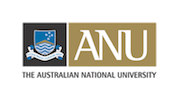

The AustKin dropdown language list relies on the standardised AIATSIS
spelling for each language. However a single Australian Aboriginal
language may go by several alternative names or spellings. If you can’t
see the language you are looking for in the list, or on the map, it may
simply be spelled in a way that is unfamiliar to you. Consult the AIATSIS Language and Peoples Thesaurus.
If all else fails, type your language name into the Mura catalogue, see
if a dictionary, wordlist or grammar appears in the results list, then
click ‘Catalog record’ and then look in the Language/Group field. All
languages in this field are listed according to their standard spelling.
Linguists use the word dialect to describe a relationship between two
languages that are closely related. But in simple terms, there is no
such entity as a ‘dialect’ – there are only languages with varying
degrees of relatedness. For example, English is a ‘language’, but the
variety of English spoken in the UK is in a dialect relationship to the
English spoken in Australia, America and New Zealand. This does not
mean that it UK English is not a ‘language’!
The word ‘dialect’ has often been misused as a way of denigrating
languages that are presumed to lack prestige. Sadly, Aboriginal
languages have often been dismissed as ‘only dialects’, with the
implication that they are not ‘real’ languages. In the AustKin database
we refer to Australia’s 300 Aboriginal speech varieties as languages
and recognise the widely accepted language families to which they
belong.
Just as you would need to learn how to interpret French spelling
rules before attempting a pronounce a French word, you will also need
to learn the relevant spelling rules before you can read and pronounce
Aboriginal words. This is made harder by the fact that Aboriginal
languages include sounds and sound combinations that are not found in
English. To make matters even more complicated, most Aboriginal
languages did not have a standard spelling system until late in the
twentieth century. The diversity of sound systems across Aboriginal
languages and between language families means that we cannot provide a
one-size-fits-all guide here, but excellent reference guides can be
obtained from your local language centre.
Here are some examples of the kinds of resources you might find useful:
Language centres are excellent sources of information on local
Aboriginal languages. You can see a full list of Australian language
centres at the RNLD page here: http://www.rnld.org/languagecentres.
There is enormous variation in the way the world’s languages divide up
the social universe. In Australian Aboriginal languages there are no
straightforward counterparts for English-language kinship terms such as
‘mother’, father’, ‘brother’, ‘aunt’, etc. Firstly, Aboriginal kinship
systems have a so-called ‘classificatory’ dimension in which somebody
may be regarded as your ‘brother’ even if you have no genealogical
connection to them. In many Aboriginal languages, the word for ‘mother’
is the same as the word for ‘mother’s sister’, meaning that you can
have more than one person who is regarded as your ‘mother’. In turn,
children of these non-genealogical mothers are regarded as your
siblings. In other words, a person who you might think of as your
cousin in English might be your ‘brother’ in an Aboriginal language.
So instead of trying to find a word for ‘brother’ or ‘sister’ or
‘aunt’, you should start with the relationship you want to refer to and
then see how this is expressed in the language. Select the language
from the dropdown menu or click on it on the map to reach the language
profile. This will bring up a kinship diagram in the form of a family
tree, showing the most immediate relationships to a hypothetical
individual. Terms for these relationships are listed within the
diagram.
AustKin is designed for research into kinship systems, and not individual family histories. The best Aboriginal Family History resource is LinkUp [Link], or you can try contacting your local Native Title representative body. In some cases, AustKin can be useful as a supplementary resource for interpreting genealogical evidence. For example, you may have an ancestor who turns up in historical records with the surname Jakamarra. This would probably indicate his ‘skin name’ from which you may be able to infer the skin name of his spouse and that of his children.
No! Remember that the data in AustKin is a direct reflection of the original sources and should not be treated as an authority (see Disclaimer). Also, kinship systems and marriage rules can change relatively quickly to adapt to new circumstances. Contemporary practices may differ greatly from past conventions. The AustKin team understand the kinship systems are always changing and recognise the authority of communities and their elders in deliberating marriage rules.
AustKin is was developed as a means of recording and visualising existing documentation on Aboriginal kinship. It was not designed as a teaching resource. It is not recommended that you rely on the results of AustKin queries to produce teaching materials unless you are in a position to evaluate the information. To learn how to evaluate kinship data we recommend consulting local language centres that may already have classroom-friendly materials available. We also recommend the book Australian Aboriginal Kinship by AustKin researcher Laurent Dousset [Link: Meet the team] as a readable introduction to the subject.